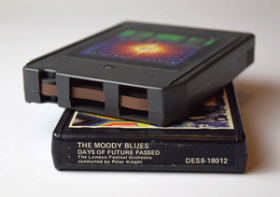The Network Is Your Headphone Cord

Summary
The recorded music market used to be dependent on physical objects to distribute recordings to buyers. Now it’s as if our headphone cords stretch all the way from our smartphones to the datacenter. That makes network performance and availability mission-critical for music services — and anyone else who serve ads, processes transactions, or delivers content. Which explains why some of the world’s top music services use Kentik Detect for network traffic analysis.
Netflow Analysis in the Age of Streaming

Music is rapidly completing its astonishing transformation from a physical object — like a CD — that you have and hold to an ephemeral service experience. According to the latest annual report from the International Federation of the Phonographic Industry (IFPI), streaming music revenue increased 45% in 2015 and now makes up nearly half of worldwide digital music revenue, which for the first time exceeded revenue from sales of physical recordings. The adoption of paid streaming music by tens of millions of subscribers comes on top of the nearly billion-strong audience using advertising-based platforms like YouTube to stream music for free.
Through most of its history, the recorded music market has been dependent on a physical object — 45s, LPs, cassettes, CDs, 8-track tapes — to distribute recordings to buyers. The rise of the MP3 marked a transitional phase in which media players covered the dual roles of audio player and portable file storage. Now, from a music point of view, the smartphone or streaming media player is essentially just a network-connected audio converter. This new reality of streaming is transforming the way that music service providers have to deal with the physical realities of getting music in the form of bits to listeners, who expect a seamless experience.
To better understand what’s happening, we can think of this transformation as the disaggregation of the MP3 player into distributed components. The file storage and player has been distributed to servers living in hyper-connected datacenters. The headset cord has effectively been stretched to include a long digital segment (Internet connectivity from the datacenter to the user device), an insertion point for a device (smartphone or media player) that handles digital-to-analog conversion, and then a short, local segment of actual physical cord connecting that device to earphones (this may be done instead via Bluetooth, which introduces additional conversion and transmission steps).
From CDs to CDNs
The most vulnerable part of the above scenario is the Internet connectivity. To deal with that challenge, music service providers are going beyond using public cloud hosting for their files. Instead they are constructing industrial-strength versions of the public Internet to ensure that the digital segment of the “headphone cord” is as good as it can get.
The technical term for what music service providers are building is a Content Delivery Network (CDN). In other words, they are building private versions of the type of service that commercial providers like Akamai, CloudFlare, and others have long been offering on a fee basis to enterprises that want to ensure the performance and resilience of their e-commerce and marketing websites to different audiences around the world. Private CDNs built by the likes of Pandora and Spotify are each dedicated and tuned to their particular service requirements and push music files to servers that are as close to their major audiences as possible. These CDNs also ensure that the connectivity from those servers to the mobile and retail broadband networks that connect smartphones and other music players are robust and performant.
With great power — in the form of costly investments in private CDN infrastructure and connectivity — comes great responsibility. The goal is to ensure that music bits flow freely so revenue can flow freely. To do this, music providers are also investing in heavy-duty NetFlow analysis based on cutting-edge Big Data technologies. Intelligently implemented, traffic analytics based on Big Data allows you to examine in full detail billions of management data records generated by network and server infrastructure. And it enables you to answer — on an ad hoc basis and in seconds —key questions about the flow of traffic, including:
- How effectively is traffic flowing over the Internet to your audience via multiple ISPs and network transit providers?
- How can you optimize the cost-performance of that traffic flow?
- Is a big bump of anomalous traffic due to new demand, a misconfiguration in your network, or a DDoS attack?
First generation approaches to Big Data analytics, like Hadoop MapReduce, can’t return the above answers within the operational timeframes required to make key decisions by operations engineers at music services, video, gaming, and other streaming providers. But luckily, with new columnar-store databases, flash storage, containerized micro-services, and bare metal computing clusters, it’s now possible to take in of tens of billions of network data records per day and to perform analytics on those records immediately upon ingest.

If Internet traffic is mission-critical for your organization — to serve ads, process transactions, or deliver content — then you can’t afford not to invest in network traffic analysis that delivers data-driven insight at operational speeds. The alternative, in today’s competitive digital business environment, is to risk seeing your business go the way of the 8-track tape. Ready to learn more? Sign up for a free trial, or contact us to request a demo.
